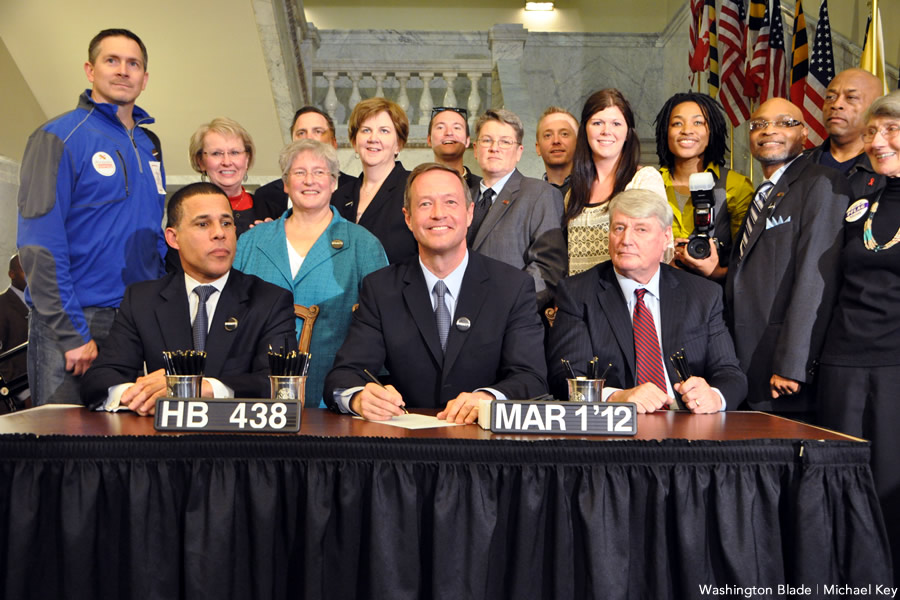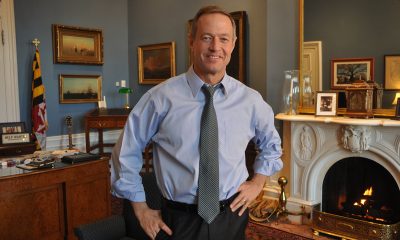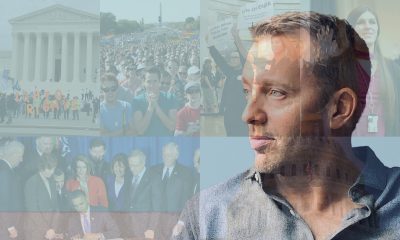Arts & Entertainment
Anatomy of a victory
Behind the scenes of the Maryland marriage battle
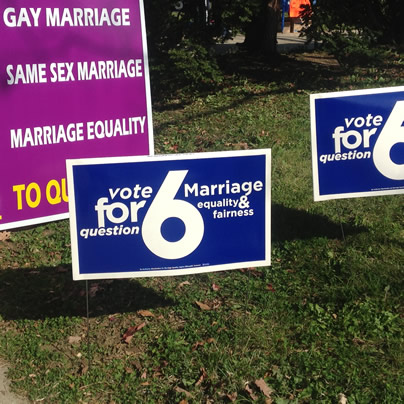
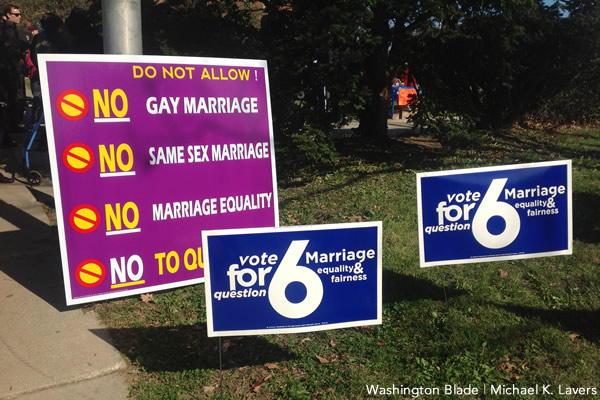
Question 6 supporters and opponents placed signs outside Northwood Elementary School in Baltimore on Nov. 6. (Washington Blade photo by Michael K. Lavers)
Edgewater, Md., residents Adri Eathorne and Kim-May Hinken arrived at Anne Arundel Medical Center in Annapolis to visit their friend, Scott Bowling, shortly before the polls closed at 8 p.m. on Election Day. The three of them nervously awaited the results of the referendum on Maryland’s same-sex marriage law as the slowly began to trickle in.
More than four hours later, they learned Question 6 had narrowly passed.
“We closed his hospital room door,” Eathorne, who has been with Hinken nine years, says. “We closed his hospital room door so we could [yell] ‘Yeah!’ and high-five each other and hug and kiss and cry.”
The passage of Question 6 by a 52-48 percent margin on Nov. 6 capped off an anxious night of waiting for the hundreds of people and dozens of reporters who had gathered at the Baltimore Soundstage.
One of Gov. Martin O’Malley’s staffers wrote on a napkin during lunch on Election Day that the referendum would pass with 53 percent support. Congressman Elijah Cummings made the same prediction during an interview with the Washington Blade earlier in the day outside a Northeast Baltimore polling place at which the governor, Baltimore Mayor Stephanie Rawlings-Blake and Brendon Ayanbadejo of the Baltimore Ravens greeted voters.
“I had a pretty good sense as we were heading into Election Day that it was going to hold,” O’Malley said in a Blade interview this week. “I had a pretty good sense in the course of those last 10 days that it was on a good positive trajectory.”
Josh Levin, campaign manager for Marylanders for Marriage Equality, was backstage with the governor, Rawlings-Blake and several other elected officials watching the results come in. President Obama had already won re-election by the time Politico reported shortly before midnight that Question 6 had passed with 84 percent of precincts reporting.
Levin and others remained hesitant to declare victory because Montgomery County had yet to report election results. (Question 6 passed in the county by a 65-35 percent margin.)
“Once we figured that out then I started breathing a little more deeply,” O’Malley says. “Then when the Montgomery County numbers came in and we were up to 51 [percent,] the night seemed to be coming into perspective. We were very reluctant to claim a victory of course until we had enough of the numbers in.”
Levin last week, while cleaning out Marylanders for Marriage Equality’s Baltimore office, says Question 6 was leading throughout the night.
“We watched it grow to 45,000 votes or so,” he says. “It shrank at one point to about 12,000. But right around midnight we felt like we had a pretty good sense of where things were. And so I went back to talk through what still could happen, what’s still out, where do we think that’s coming from and made the decision to go up on stage and declare victory from there.”
“There was confidence once the results started to come in,” says gay state Sen. Rich Madaleno (D-Montgomery County.) “There was confidence all night long, it’s just a matter of when do you say it. And because we had never won before, there’s no desire to jinx yourself. I think you’re more cautious than you would have ever been.”
The Washington Post projected Question 6 had passed just as O’Malley, Rawlings-Blake, Levin and others took to the stage to declare victory. Those gathered inside the Baltimore Soundstage became euphoric when lesbian state Del. Maggie McIntosh (D-Baltimore City) announced the referendum had passed. People began to cry. Gay state Dels. Luke Clippinger (D-Baltimore City) and Heather Mizeur (D-Montgomery County) were among those who started dancing once the governor and other dignitaries stepped away from the podium.
O’Malley instrumental in fundraising
Election Day capped off a long and often tumultuous effort for Maryland’s same-sex marriage advocates that began in 1997 when three state lawmakers introduced the first bill that would have allowed nuptials for gays and lesbians.
Equality Maryland, which nearly closed in June 2011, and the American Civil Liberties Union in 2004 filed a lawsuit on behalf of Lisa Polyak and Gita Deane and eight other same-sex couples and a gay widow who sought the right to marry in the state. The Maryland Court of Appeals in 2007 ultimately upheld the constitutionality of the state’s ban on marriage for gays and lesbians.
State lawmakers in 2011 narrowly defeated a same-sex marriage bill, but legislators approved it in February. O’Malley signed the law on March 1.

Governor Martin O’Malley speaks to reporters outside Northwood Elementary School in Baltimore on Nov. 6. (Washington Blade photo by Michael K. Lavers)
The governor soon emerged as the law’s most prominent supporter, especially after the Maryland Marriage Alliance collected more than 160,000 signatures to force a referendum on the issue. Marylanders for Marriage Equality turned to O’Malley, among others, in early August to help bolster their then-anemic fundraising efforts.
“We found ourselves in a situation where polling looked good, we felt good about what we were building, but we simply weren’t bringing in money at the rate that we needed to,” Levin says. “We as a campaign and with our board members we sort of rang the bell a little bit and talked to the governor, got Maggie McIntosh more involved. The ACLU redoubled their efforts. And I think brought to bear all the efforts that helped us [reach] the financial goals that we needed to.”
Levin said in June his group could effectively defend the law with between $5-$7 million, in spite of some observers who said Marylanders for Marriage Equality needed to raise up to $12 million.
O’Malley headlined a star-studded fundraiser gay former Republican National Committee Chair Ken Mehlman co-hosted at a New York City hotel in September that raised more than $100,000 for the pro-Question 6 group. The governor also appeared at an Oct. 2 fundraiser with D.C. Mayor Vincent Gray and House Minority Whip Steny Hoyer (D-Md.) at gay Democratic lobbyist Steve Elmendorf’s Logan Circle home. Former National Football League Commissioner Paul Tagliabue and his wife Chan announced a $100,000 donation to Marylanders for Marriage Equality during the fundraiser that Chip DiPaula, Jr., former Gov. Bob Ehrlich, Jr.’s gay chief-of-staff, attended alongside Mizeur and others.
The Human Rights Campaign contributed more than $1.5 million in cash and in-kind contributions to the pro-Question 6 campaign. Freedom to Marry, which initially declined to join the coalition defending the state’s same-sex marriage law, said it invested more than $200,000 into the campaign. This figure includes the $70,000 it gave that helped Marylanders for Maryland Equality air their radio ad highlighting President Obama’s support of marriage rights for same-sex couples in the days leading up to Election Day.
“HRC provided so much of the backbone to this whole effort,” Madaleno says. “They were absolutely critical.”
Marylanders for Marriage Equality ultimately raised $6 million — they consistently outraised the Maryland Marriage Alliance throughout the Question 6 campaign. The ACLU and other organized labor groups contributed more than $1 million to Marylanders for Marriage Equality.
New York City Mayor Michael Bloomberg and Republican hedge fund manager Paul Singer both donated $250,000 to the pro-Question 6 campaign. The bulk of the 11,000 people who contributed to Marylanders for Marriage Equality, however, live in Maryland.
“We proved from going to the state that nobody thought could win to being the second-widest margin after Maine among the four is pretty cool,” Levin says. “And I want to really say the team that was here through the legislative campaign that figured out, that believed in doing Maryland when nobody else did — the leadership of folks like Sultan [Shakir] and Kevin [Nix], Rich Madaleno and Luke Clippinger and all the others.”
One of the proudest moments of the campaign for Levin came when Marylanders for Marriage Equality was able to counter a Maryland Marriage Alliance television ad that claimed Question 6 would force schools to teach same-sex marriage with their own ad eight hours later that featured Baltimore County teacher Pamela Gaddy. Levin showed it to McIntosh, HRC President Chad Griffin, former O’Malley adviser Joe Bryce and his wife Kristen and a handful of others shortly after he arrived at a campaign fundraiser at DiPaula’s home before he put it on the air on Oct. 26.
“We were ready and able to do it that fast, versus the stories that so many other folks who worked in California [on the campaign against Proposition 8] told just having to figure it out there,” Levin says. “The lessons they learned they gave us and we applied. And we took a Maryland angle on it, putting up an African-American, Baltimore-area schoolteacher to just go, ‘That’s not true, you know.’ When we looked at it a week later, their argument wasn’t resonating. People just weren’t buying it, according to our research.”
Obama, NAACP endorsements key
O’Malley, Levin and Mizeur all noted Obama’s public support of marriage rights for gays and lesbians and his endorsement of the same-sex marriage law garnered additional support among black Marylanders.
In addition to the radio ad featuring the president, Marylanders for Marriage Equality also sent a mailing that contained his and first lady Michelle Obama’s statements in support of marriage rights for same-sex couples to 200,000 African-American households in the state. (Baltimore Black Pride co-chair Meredith Moise was handing out these fliers on Election Day as she spoke with voters outside a polling place at a Northeast Baltimore elementary school.)
“It was important that we echoed their support,” Levin says.
The NAACP’s support of Question 6 and particularly television ads that featured Julian Bond, the civil rights organization’s chair emeritus, and Revs. Delman Coates of Mount Ennon Baptist Church in Clinton and Donté Hickman of Southern Baptist Church in Baltimore appear to have resonated with voters in the predominantly black Charm City.
Question 6 passed by a 57-43 percent margin in Baltimore City. It lost by slightly more than 4,300 votes in Prince George’s County.
A Public Policy Polling survey in May found 55 percent of black Marylanders would vote for the law, compared to 36 percent who said they would oppose it. A Hart Research Associates survey conducted in late July found 44 percent of African-American voters would support Question 6, compared to 45 percent who said they would vote against it. A Gonzales Research poll in September noted 44 percent of black Marylanders backed marriage rights for same-sex couples, compared to 52 percent who oppose nuptials for gays and lesbians. An Associated Press exit poll indicates roughly half of black Maryland voters voted against Question 6.
Maryland Marriage Alliance Chair Derek McCoy, Bishop Harry Jackson, Jr., of Hope Christian Church in Beltsville and others who opposed the law repeatedly criticized and even mocked the NAACP, Obama, Coates, Hickman and other prominent black leaders who backed marriage rights for same-sex couples in the state. Some Question 6 opponents resorted to increasingly homophobic rhetoric during appearances at black churches and other public forums in the weeks leading up to Election Day. Pastor Luke Robinson of Quinn Chapel AME Church in Frederick even suggested during a sparsely attended rally against the same-sex marriage law at a city park on Nov. 4 that Superstorm Sandy struck New York City less than three weeks after Bloomberg donated $250,000 to Marylanders for Marriage Equality.
“It pretty clearly was having an effect,” Levin says. “I don’t think the other guys would have been bringing it up as often if it hadn’t been.”
The Maryland State Conference of the NAACP and the organization’s Prince George’s County and Baltimore branches in particular factored prominently in the pro-Question 6 campaign.
Bob Ross, president of the Prince George’s County Branch of the NAACP, organized phone banks and canvassing efforts ahead of Election Day. He also spoke about his gay brother who had lived in the closet for years during a Nov. 5 rally at the University of Maryland in College Park that O’Malley, Hoyer, Madaleno, state Sen. Allan Kittleman (R-Carroll and Howard Counties) and others attended.
“Surely we need to recognize not only the importance of their endorsement, but the amount of work that they did,” Levin says.
Couples busy planning weddings
With all the behind-the-scenes work that led to the passage of Question 6, the only thing that matters to those who plan to take advantage of the law once it officially takes effect on Jan. 1 is the fact they can legally marry the person they love.
“It was kind of like, ‘Oh my God, what are we doing about our wedding plans?’” says ShaDonna Jackson, a Hyattsville, Md., resident who plans to wed her partner of nearly four years, Latisha Smith. “We needed absolute certainty because it’s a serious matter. It’s like, ‘Oh my goodness everything depends on this, so we need to know.’ And now that we know, we are back to our wedding plans.”
Eathorne and Hinken, who chairs the annual Chesapeake Pride Festival, are planning to get married in Annapolis on the first day same-sex couples can legally marry in the state.
“We’ve waited so long for it to be legal in our home state that we really wanted to do it as soon as possible,” Eathorne says (they had a church wedding in 2007). Hinken also spoke in support of the same-sex marriage bill in front of the State House in Annapolis. “We just want to make that statement. And that’s one of the reasons why we want it to be ASAP. We’ve been together for nine years. We don’t need a big full-blown wedding. We had our thing. It is special and we do plan to acknowledge it and celebrate it in some way.”
Madaleno, who once again proposed to his husband Mark on stage at the Baltimore Soundstage after Question 6 passed, plans to have what he describes as their “renewal of vows” once they and their two children return from a family vacation at Walt Disney World in Florida in January. The couple married 11 years ago at their Bethesda church, but Madaleno said having the legal recognition will make it even more official.
“What will be different,” he says, “is we’re getting a license.”
a&e features
Local, last-minute holiday gift ideas
Celebrate the season while supporting area businesses

The DowntownDC Holiday Market is bustling. Union Station is decked out with its annual Christmas tree. Washingtonians have wrapped their houses and apartment balconies with festive lights and holiday decorations. The holiday season is here. And with stockings to fill and empty space under the tree, Washington’s local shops and artists have plenty to offer.
Show your LGBTQ and D.C. pride with the Washington Blade’s annual holiday gift guide.
To embrace the holiday buzz: The Blanco Nwèl cocktail from Alchy Cocktails. This Caribbean eggnog is one of Alchy Cocktail’s seasonal holiday cocktails. The flavor profile is similar to coquito, a traditional Puerto Rican Christmas drink with a coconut base. As a queer and Caribbean-owned business, Alchy Cocktails has been based out of Washington since 2021. Blanco Nwèl is available in both cocktail ($24) and mocktail ($12) online and at a variety of holiday markets, including the Tingey Plaza Holiday Market, the Flea Market at Eastern Market, Union Station’s Main Hall Holiday Market, and more. ($24)

A spicy bite: Gordy’s Cajun Okra from Salt and Sundry. These spicy, tangy pickles pull on Southern Cajun-style flavors, packing a punch with paprika, cayenne, and more. Gordy’s is an LGBTQ-owned and Washington-based brand, making this gift an opportunity to support a local LGBTQ business straight from the jar. This pantry staple is available on Salt & Sundry’s website and at its locations in Union Market, Logan Circle, and its Georgetown holiday pop-up store. ($14)
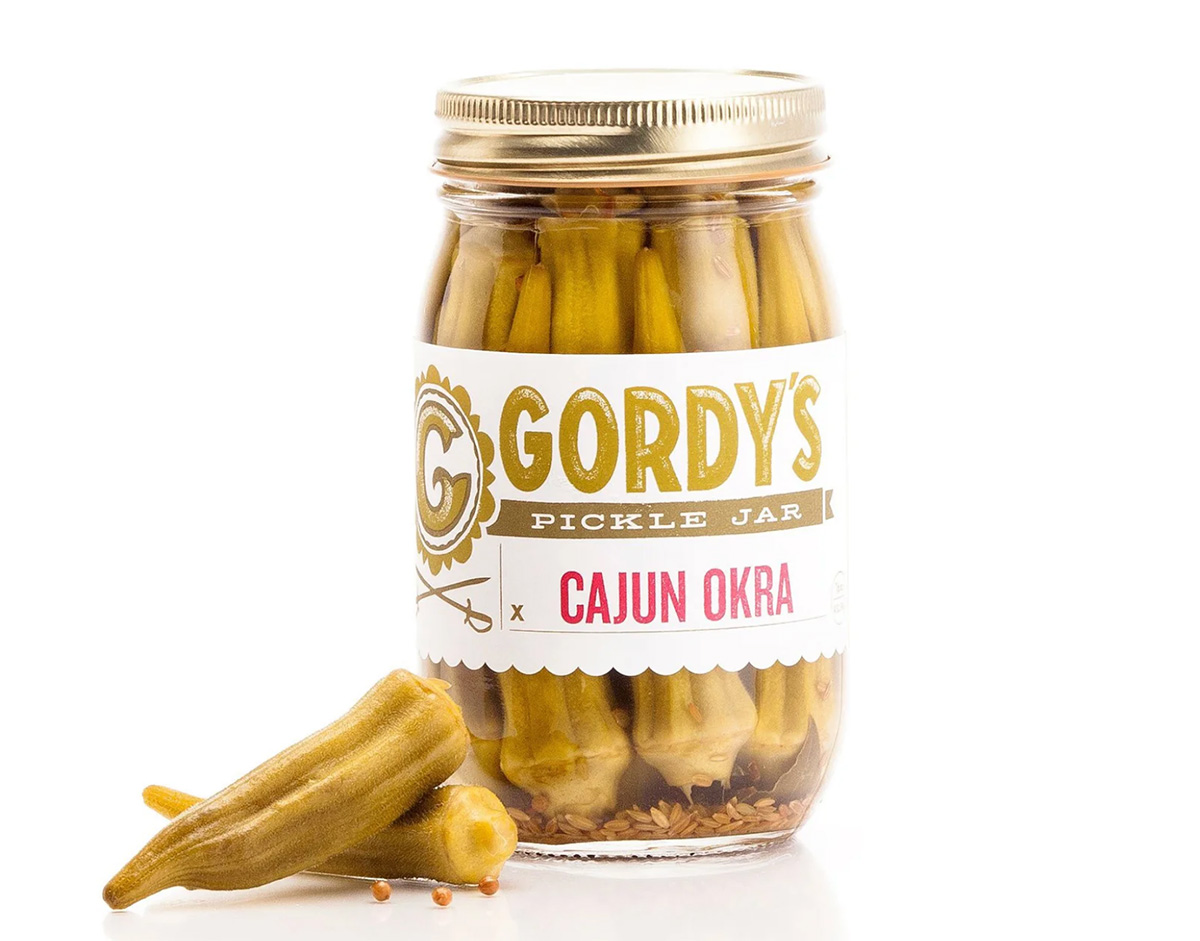

To celebrate Washington pride: The DC Landmark Tote Bag from The Neighborgoods. Native Washingtonians, visitors, friends and family alike will find something to love about this Washington-themed tote bag. Food trucks, the 9:30 Club, the Metro logo and pandas from the National Zoo are just some of the city’s landmarks depicted across the tote in a red, white, and blue color palette. The tote is a part of the DC Landmarks collection, which donates 10 percent of its sales to the American Civil Liberties Union. The Neighborgoods itself is a local, woman-owned business built out of a passion for screen-printing in 2013. The 100 percent cotton canvas tote is for sale online or at the DowntownDC Holiday Market. ($22)
To give friends and family their flowers: The Flowers Bandana from All Very Goods. This 100 percent cotton bandana was designed in Washington and hand printed in India. Its uniqueness comes in being covered with the faces of Black women, representing a “love letter to all women but especially Black women,” according to All Very Goods. The Black woman-owned and operated business, based out of Northwest Washington, has a mission to celebrate diversity and representation through its products. The bandana intends to give Black women their “flowers.” The Flowers bandana is available for purchase online. ($24)
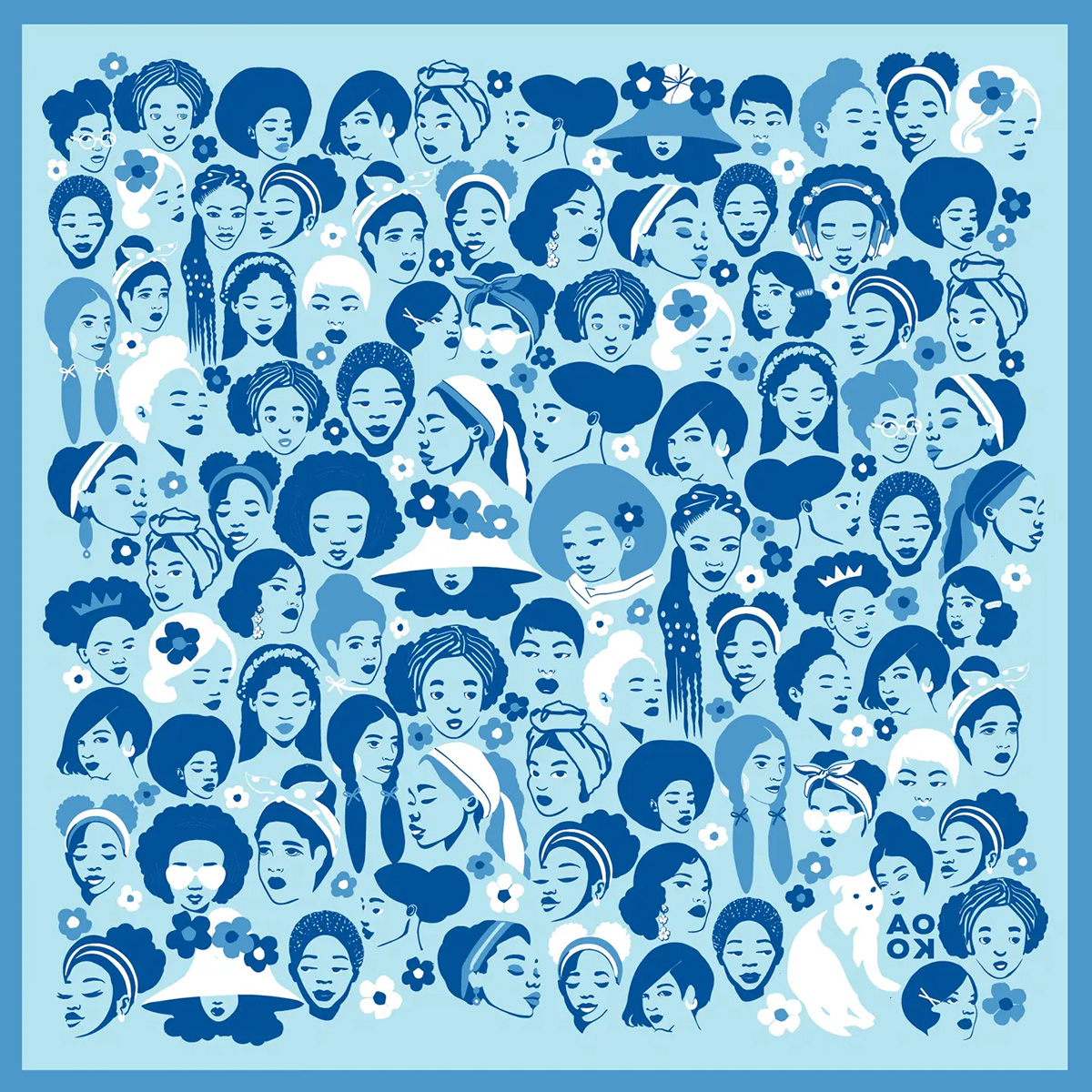
To unlock culinary creativity: The Curious Chef Gift Collection from Each Peach Market. This customizable collection of kitchen oddities — ranging from tinned fish to chili oil — is a quirky gift for the most inventive chefs. The collection is available in a Standard Santa, Extra Goodies and Super Holiday Size for up to $165. The Washington-based market, founded in 2013, permits customers to make the collection special by specifying what unique ingredients are packaged, including products made by local or LGBTQ brands. Each Peach Market offers assembly and pick up in-person at its Mount Pleasant shop and also offers local delivery and nationwide shipping via its website. ($85)

To give a touch of sweetness: The DC Landmark Chocolate Covered Oreo Holiday Cookies from Capital Candy Jar. Wrapped in a festive red bow, this box of nine cookies embraces love for Washington and the holiday season in one. Among the dark and milk chocolate covered cookies are images of the U.S. Capitol, the White House, the Lincoln Memorial, the Jefferson Memorial and festive hollies. The treat, packaged in a Hill East facility just a few blocks from the Capitol, is available for purchase online and at the DowntownDC Holiday Market. ($23.95)


To celebrate queer gaming: Thirsty Sword Lesbians from Labyrinth Games & Puzzles. This roleplaying game embraces lesbian culture by unlocking a world of swords, romance, and battle. Ideal for group settings, the book presents a system of world building and character identities that are best brought to life by creative minds. Labyrinth, which has been a local Washington business for more than 15 years, celebrates non-digital fun through games and puzzles that connect the community. This gift is offered online and at Labyrinth’s Capitol Hill location. ($29.99)
To make a bold statement: The “Resist” T-shirt from Propper Topper. This locally screen-printed black tee features the Washington flag designed within a raised fist, symbolizing both Washington pride, and political resistance. The shirt is made exclusively by Propper Topper, a local Washington business that evolved from a hat shop to a gift store since opening in 1990. The tri-blend unisex shirt is available both for pickup at Propper Topper’s Cathedral Heights location and shipping via the online site. ($32)
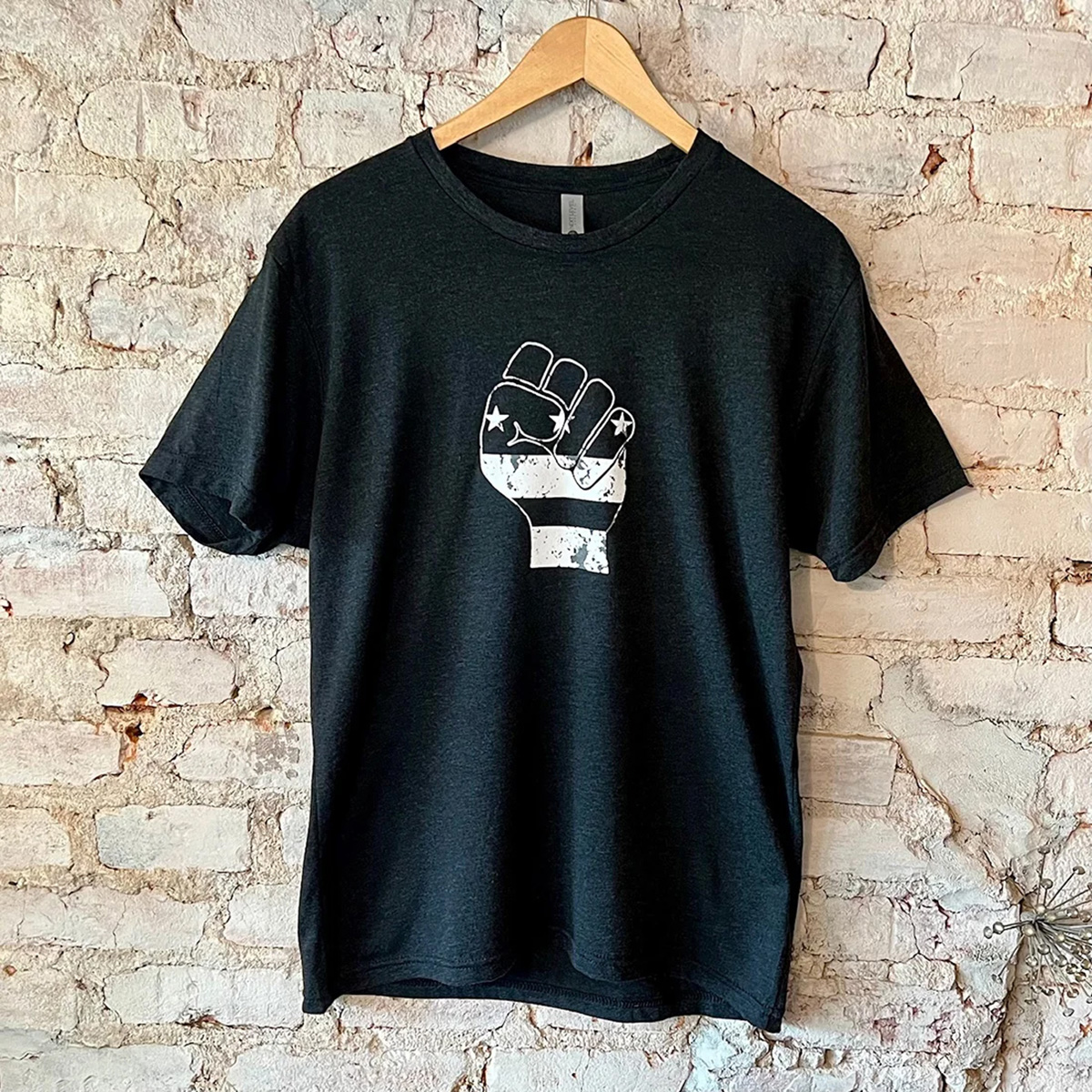
To keep it c(g)lassy: The Glass Ball earrings from Blue Moon Aquarius. Gifting can rarely go wrong when it comes to a new pair of earrings. The unique statement earrings — made of polymer clay, glass, and 18k gold plating over surgical steel — are hand cut, sanded and assembled in Washington, meaning each set is unique. Blue Moon Aquarius, a local brand, is known for its small batch jewelry and home decor designed with clay materials. Available in oxblood, hunter green, lavender, and bluestone color palettes, these earrings are available for purchase on Blue Moon Aquarius’ website and at the DowntownDC Holiday Market. ($48)

To elevate a holiday tea or charcuterie party: The Honey Flight: Tea Lover’s Selection from BannerBee. This local honey company presents the ideal gift to make cozying up with a cup of tea slightly more special. The Honey Flight contains three types of raw wildflower honey infused with fair trade Ugandan vanilla bean, chai spices, and locally sourced lemon thyme herb. The gift is also an opportunity to uplift a family company based in the Mid-Atlantic that offers all-natural, sustainable products. The flight is available online, at the DowntownDC Holiday Market or at the Arlington Courthouse and Dupont Farmers’ Markets. ($36)

For Baltimore shoppers: If you’re in Charm City, don’t miss Balston Mercantile, opened by a gay couple in June. Their gorgeous shop in the Hampden neighborhood offers an array of unique, upscale finds, from barware and artwork to cookbooks and home decor and more. (849 W. 36th St.)
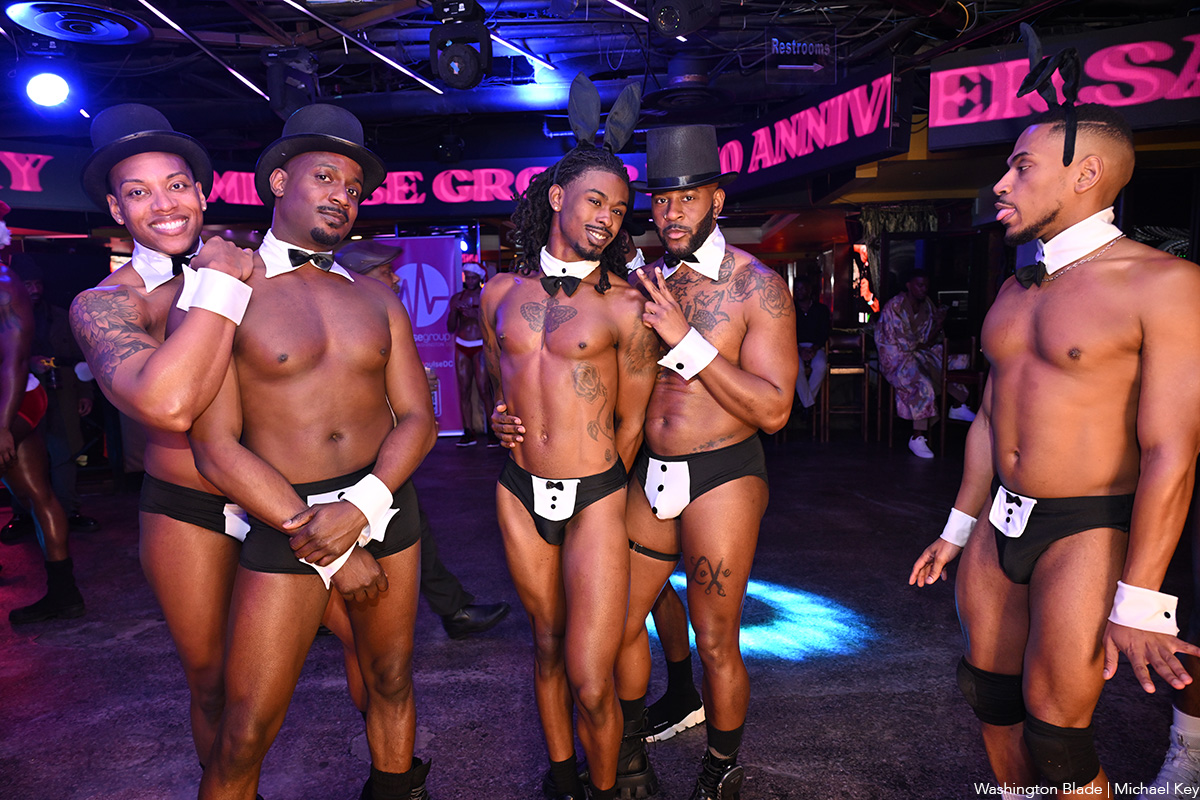
Impulse Group DC held “10’s Across the Board: A Celebration of 10 Years” at Bravo Bravo (1001 Connecticut Ave., N.W.) on Sunday, Dec. 14. Impulse Group DC is a volunteer-led 501(c)(3) and affinity group of AIDS Healthcare Foundation dedicated “to engaging, supporting, and connecting gay men” through culturally relevant health and advocacy work.
(Washington Blade photos by Michael Key)
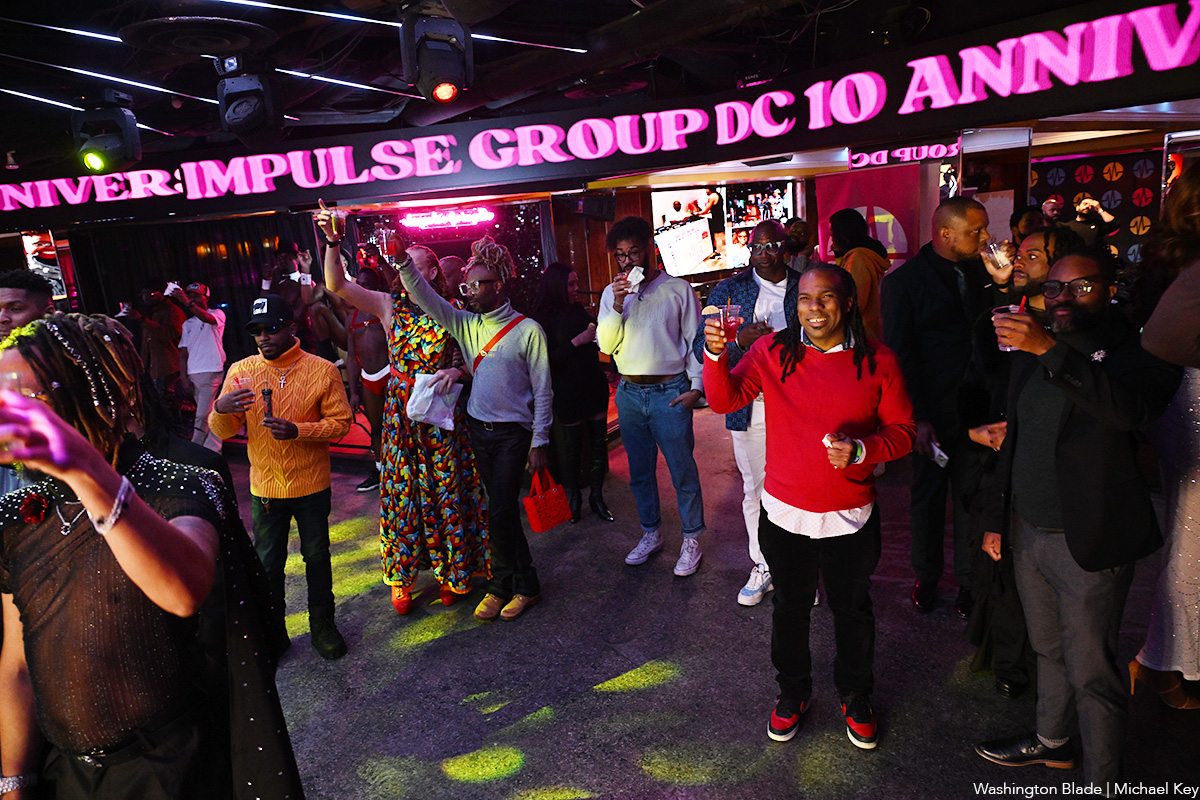
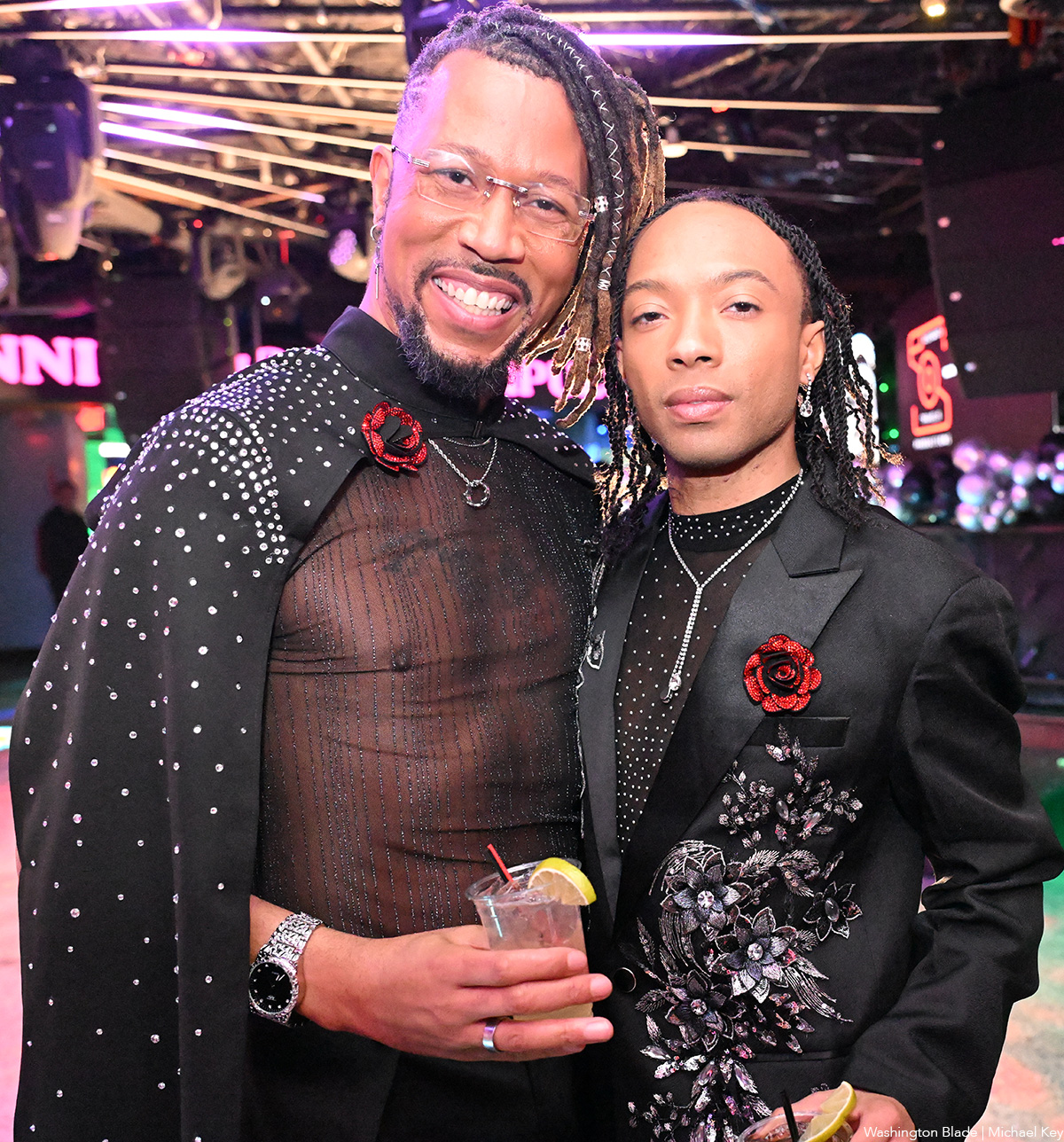
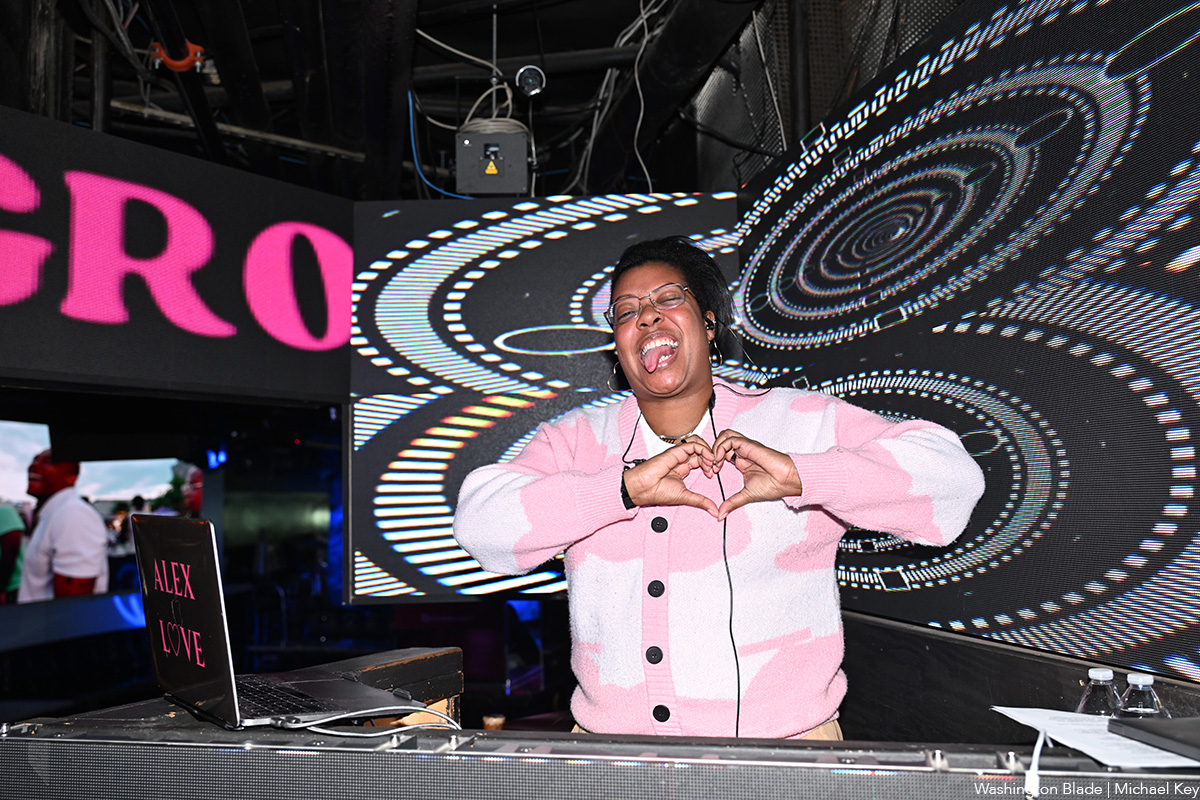
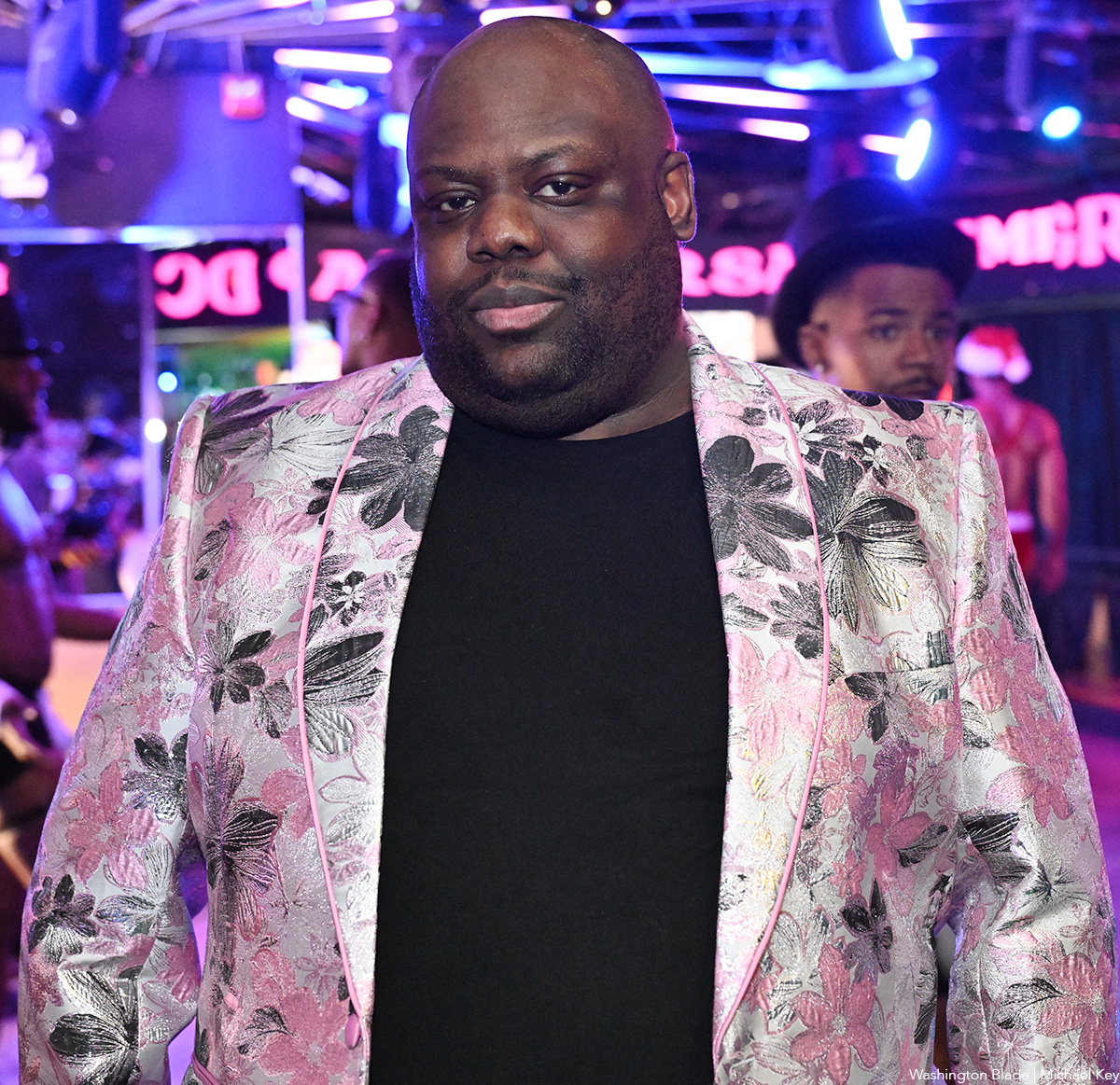

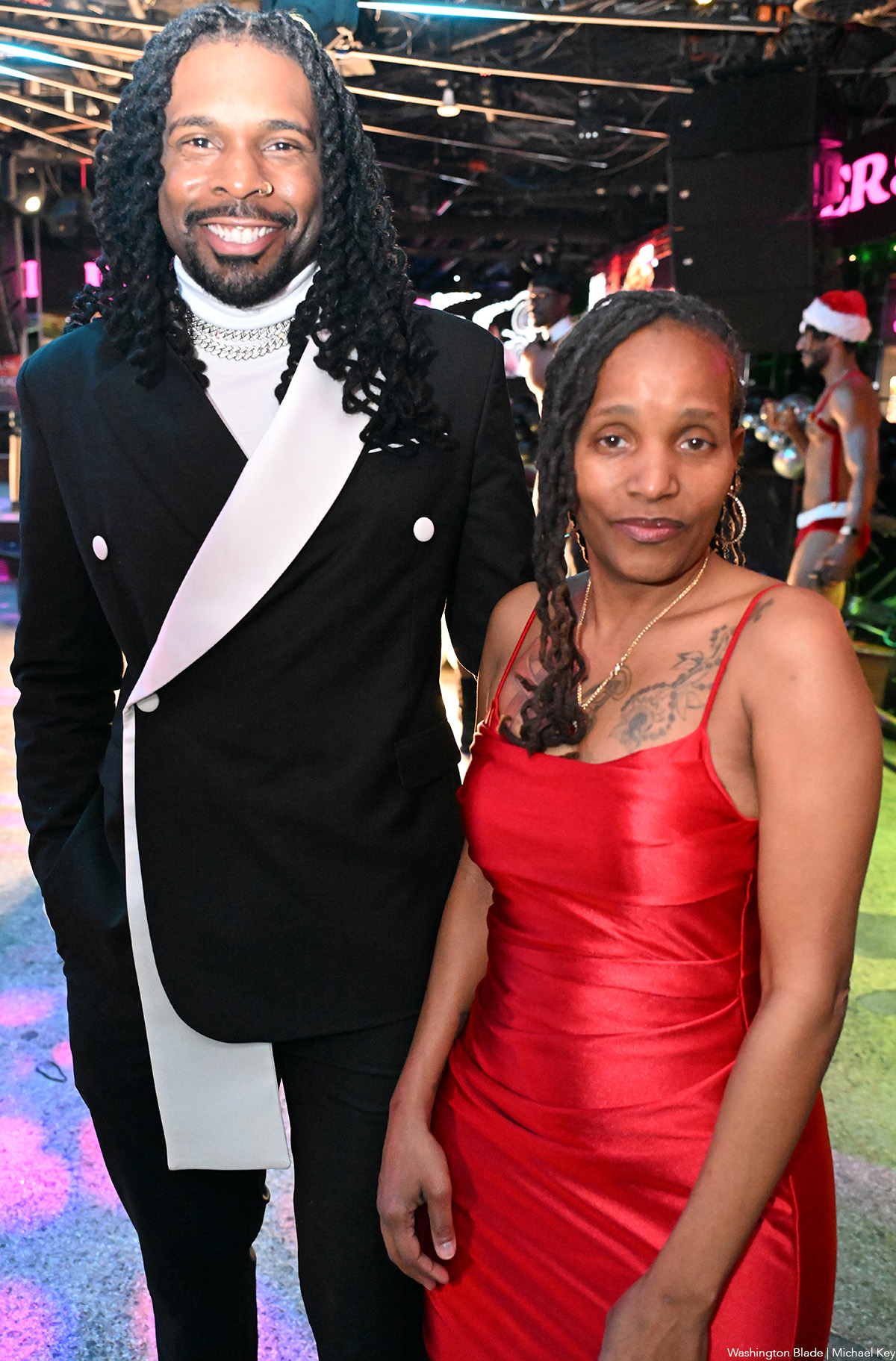
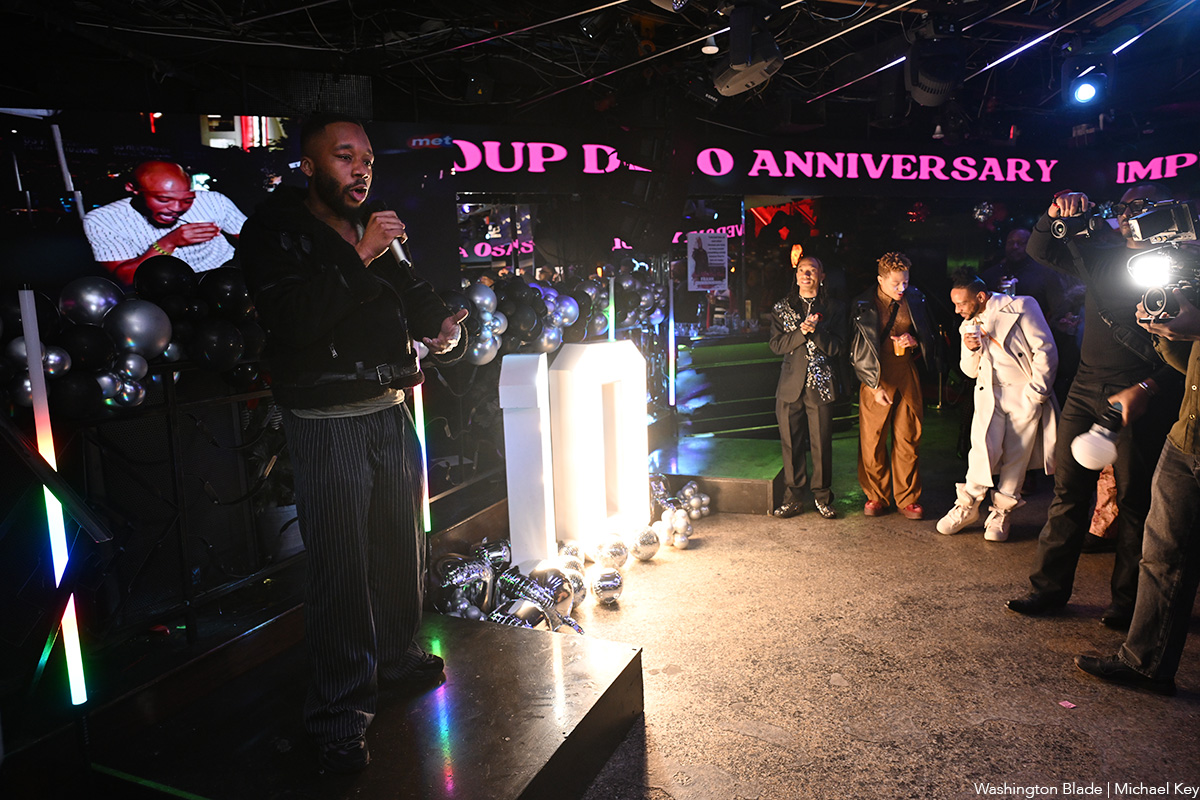
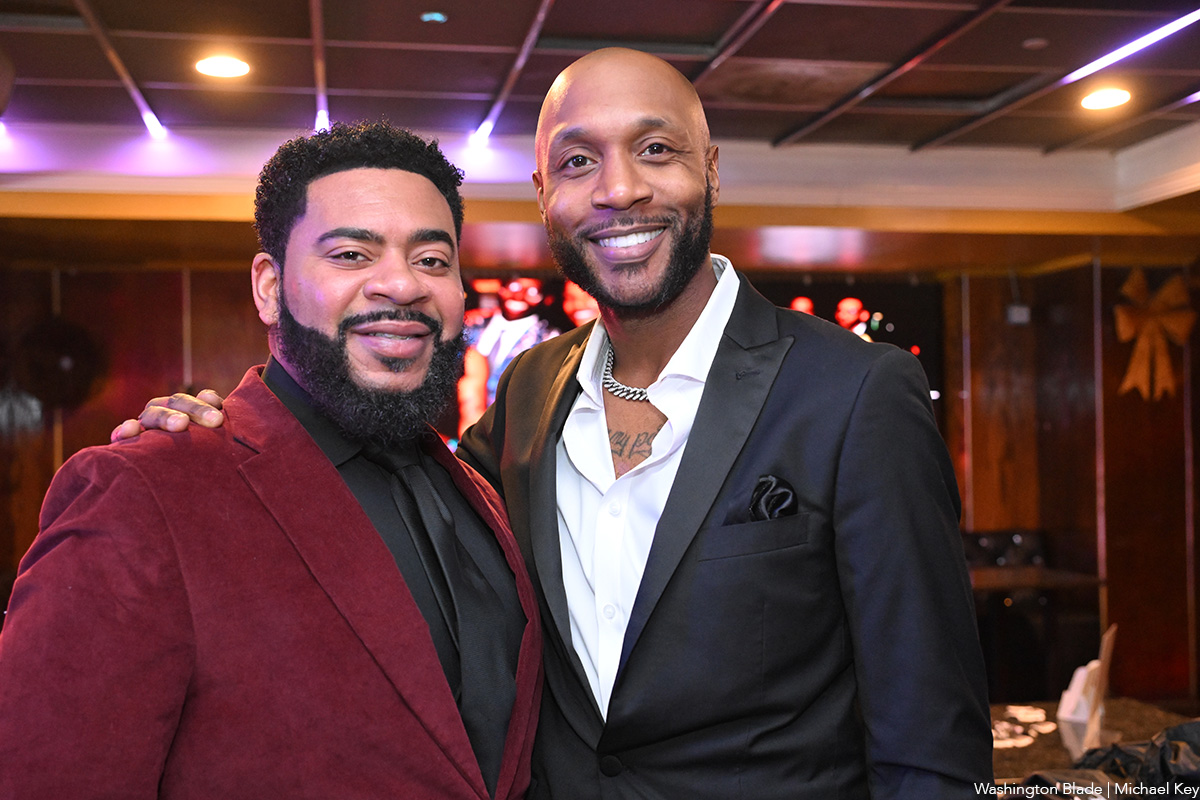
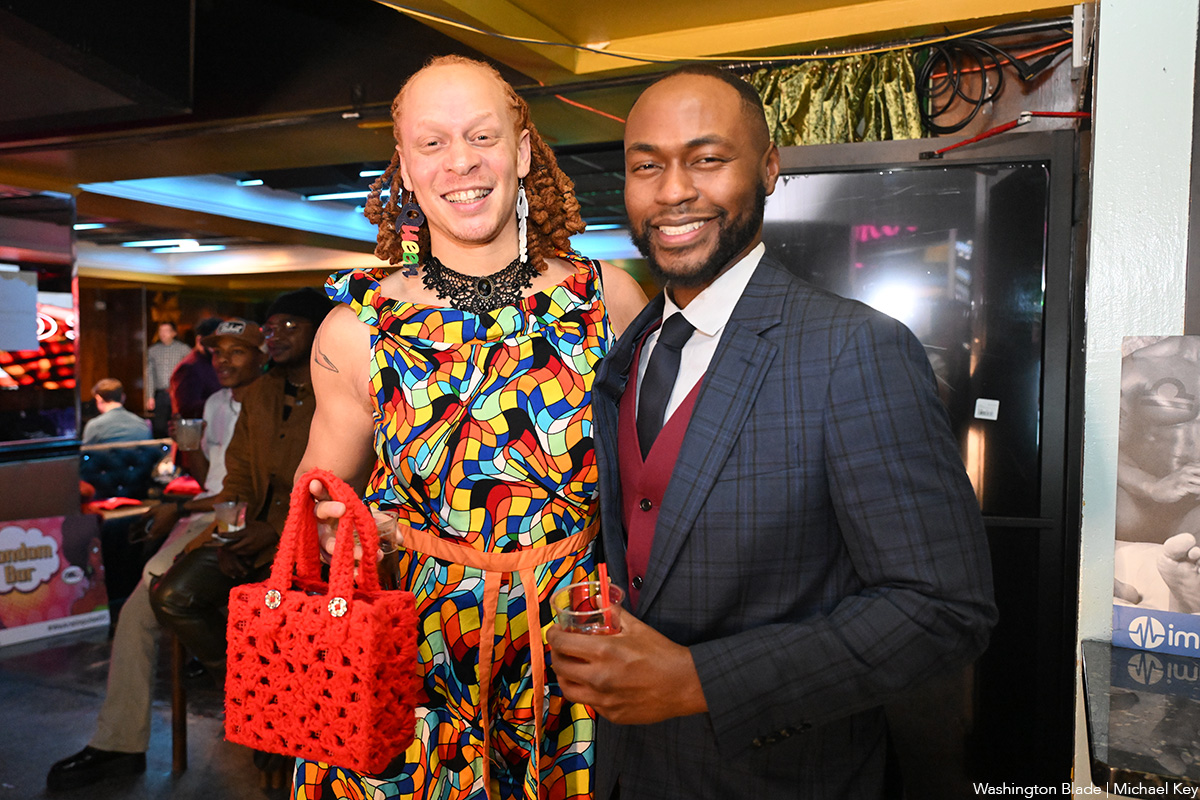
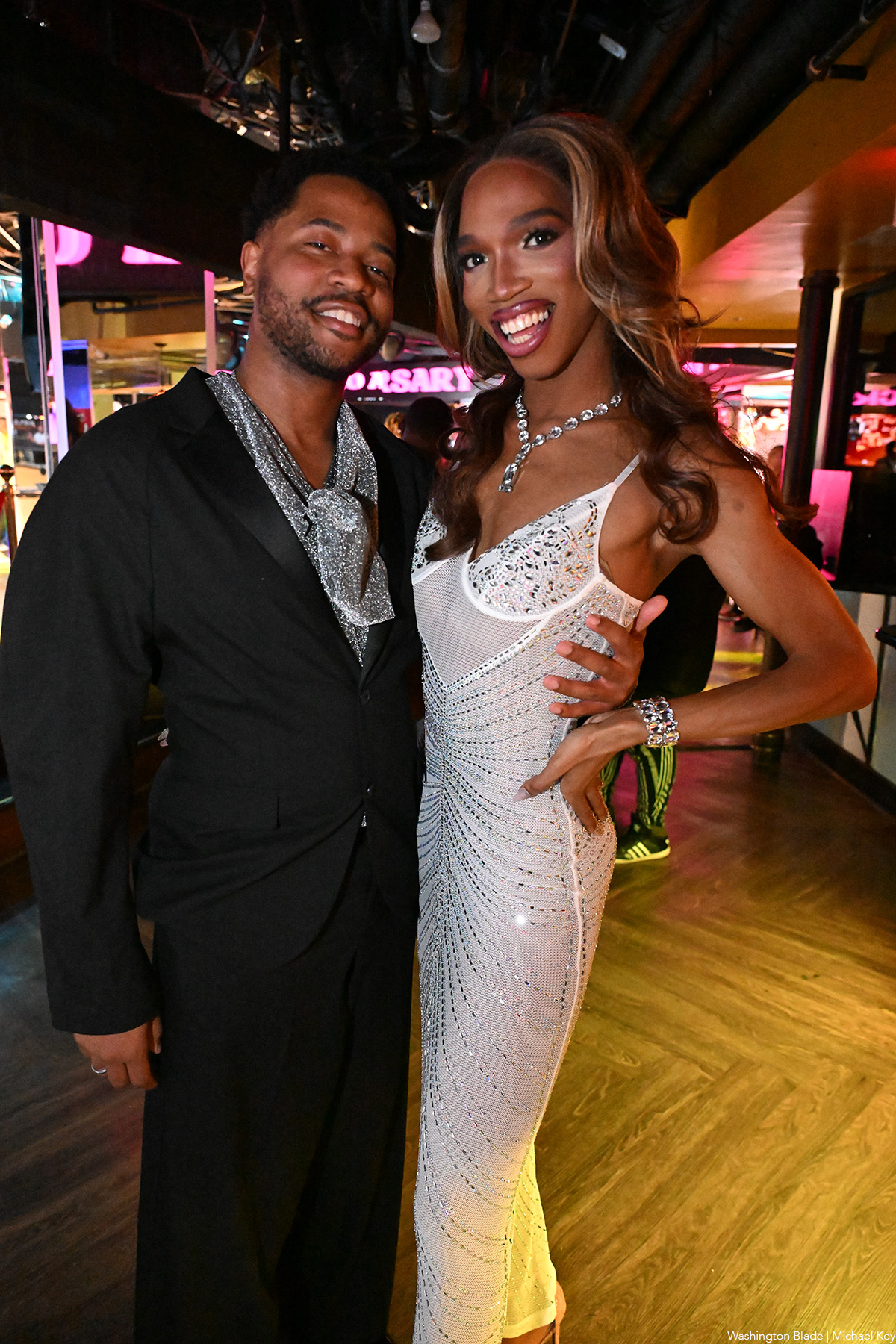
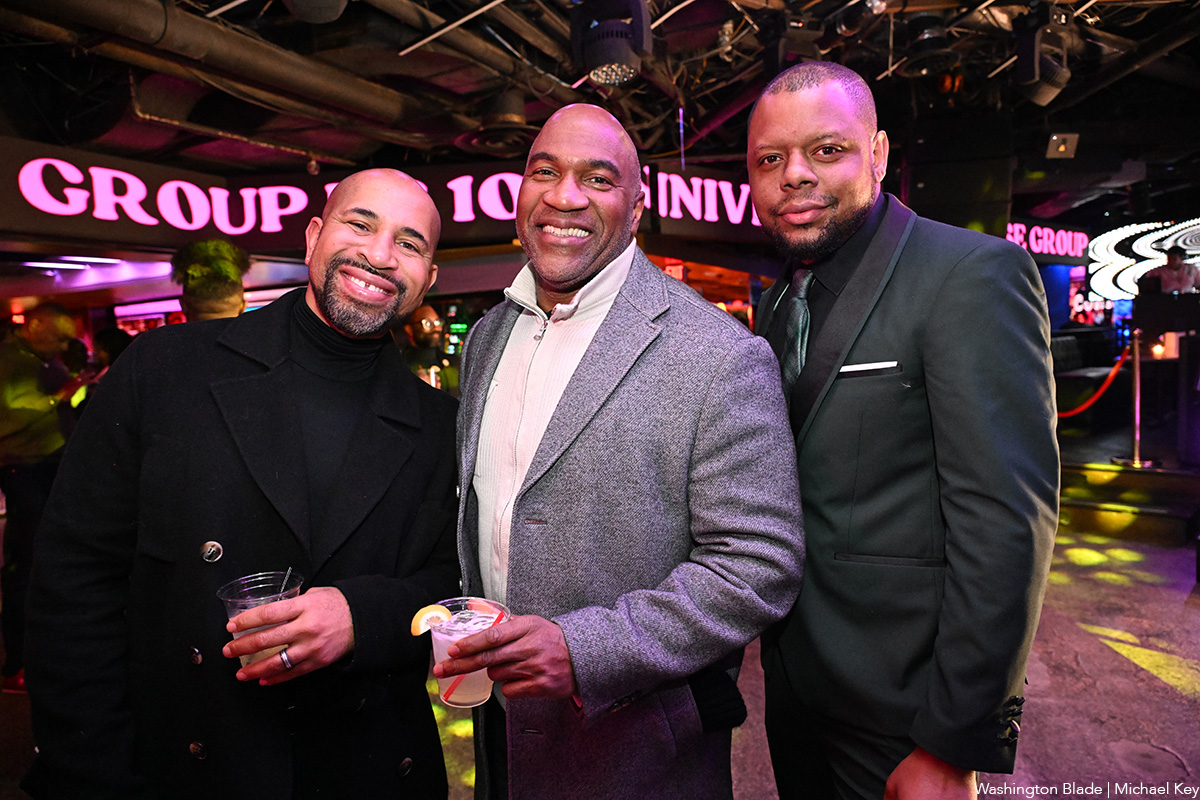
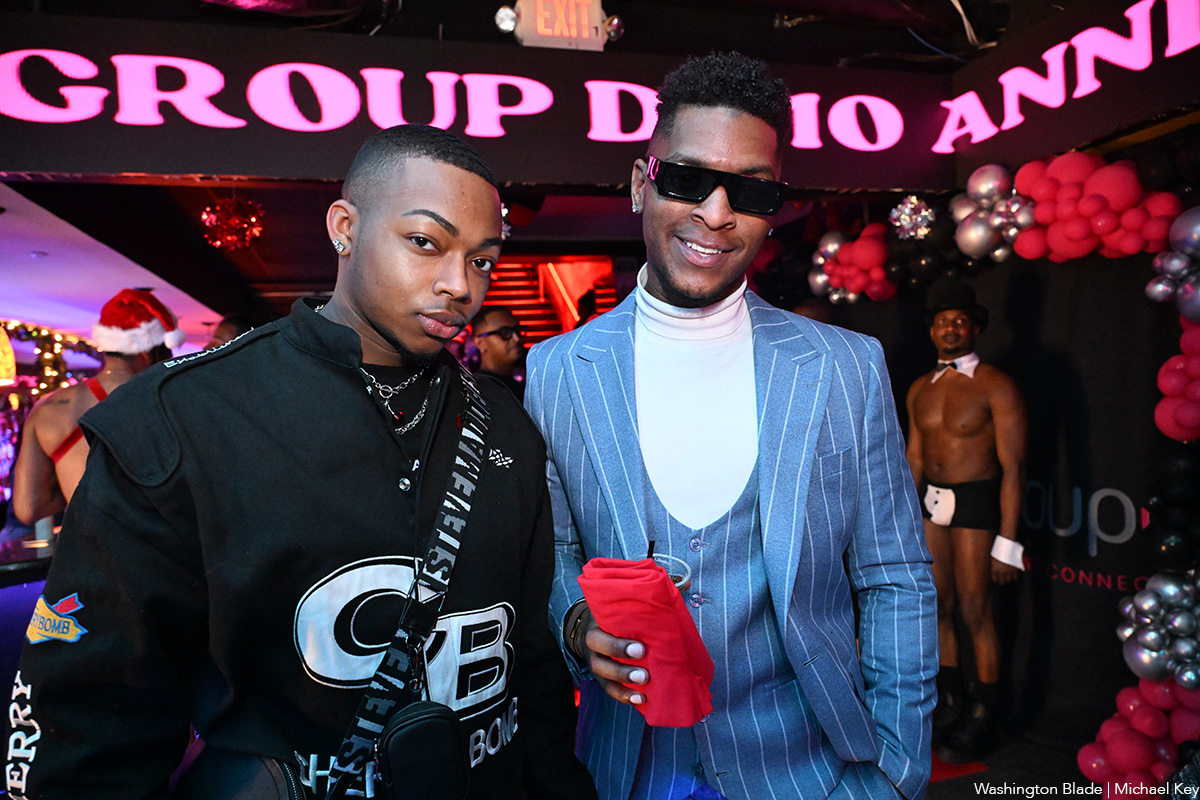
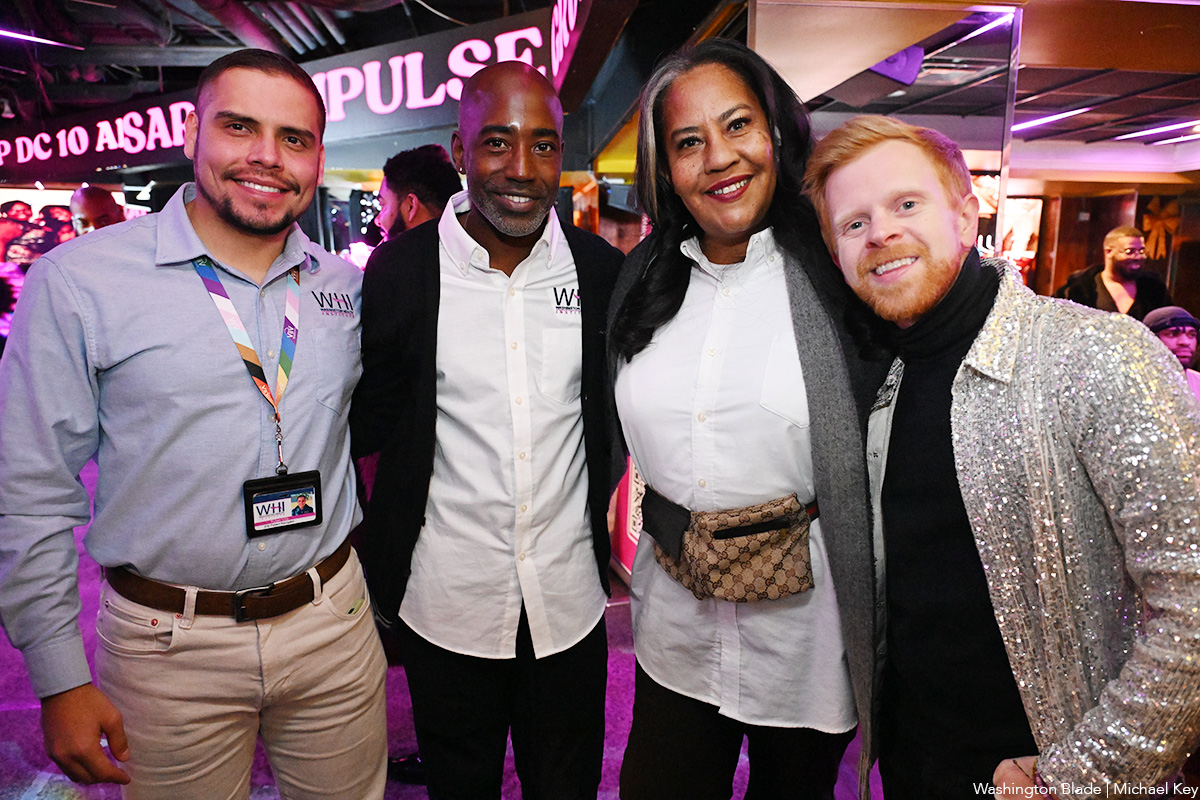

Rob Reiner, most known for directing untouchable classics like “The Princess Bride,” “Misery,” “When Harry Met Sally…,” and “Stand by Me,” died Dec. 14 alongside his wife, Michele Singer Reiner, in their Los Angeles residence. While investigations are actively underway, sources have told PEOPLE Magazine that the pair’s son, Nick Reiner, killed his parents and has been taken into custody.
Reiner was a master of every genre, from the romantic comedy to the psychological thriller to the coming-of-age buddy movie. But in addition to his renowned work that made him a household name, Reiner is also remembered as a true advocate for the LGBTQ community. In 2009, Reiner and his wife co-founded the American Foundation for Equal Rights, helping fight against California’s Prop 8 same-sex marriage ban. They were honored at the 2015 Human Rights Campaign Las Vegas Gala.
In a statement, HRC President Kelley Robinson said: “The entire HRC family is devastated by the loss of Rob and Michele Reiner. Rob is nothing short of a legend — his television shows and films are a part of our American history and will continue to bring joy to millions of people across the world. Yet for all his accomplishments in Hollywood, Rob and Michele will most be remembered for their gigantic hearts, and their fierce support for the causes they believed in — including LGBTQ+ equality. So many in our movement remember how Rob and Michele organized their peers, brought strategists and lawyers together, and helped power landmark Supreme Court decisions that made marriage equality the law of the land — and they remained committed to the cause until their final days. The world is a darker place this morning without Rob and Michele — may they rest in power.”
Reiner’s frequent collaborators have also spoken out as the industry is in mourning, including figures like Ron Howard and John Cusack.
A joint statement from Jamie Lee Curtis and Christopher Guest (who starred in Reiner’s “This is Spinal Tap”) reads: “Christopher and I are numb and sad and shocked about the violent, tragic deaths of our dear friends Rob and Michele Singer Reiner and our ONLY focus and care right now is for their children and immediate families and we will offer all support possible to help them. There will be plenty of time later to discuss the creative lives we shared and the great political and social impact they both had on the entertainment industry, early childhood development, the fight for gay marriage, and their global care for a world in crisis. We have lost great friends. Please give us time to grieve.”
While attending the 2019 HRC Los Angeles Dinner, Reiner spoke out about the need for equality: “We have to move past singling out transgender, LGBTQ, black, white, Jewish, Muslim, Latino. We have to get way past that and start accepting the idea that we’re all human beings. We’re all human beings, we all share the same planet, and we should all have the same rights, period. It’s no more complicated than that.”
-

 Politics2 days ago
Politics2 days agoLGBTQ Democrats say they’re ready to fight to win in 2026
-

 District of Columbia2 days ago
District of Columbia2 days agoBrian Footer suspends campaign for Ward 1 D.C. Council seat
-

 Chile5 days ago
Chile5 days agoFar-right José Antonio Kast elected Chile’s next president
-

 Opinions3 days ago
Opinions3 days agoLighting candles in a time of exhaustion

